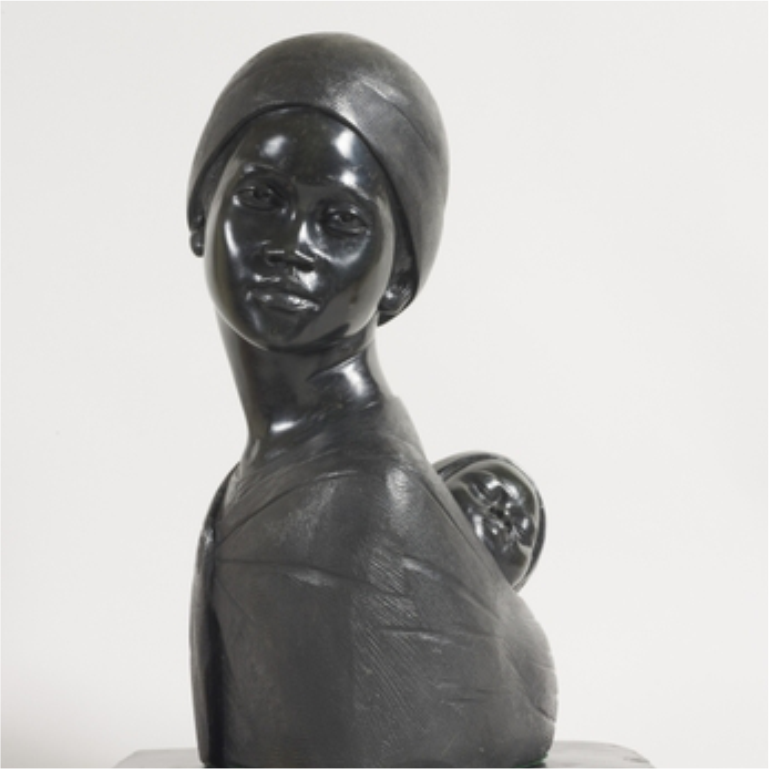Casper Darare
1952 – 2001 | Zimbabwe
Casper Darare was a South African of Shona tribe (Zimbabwe) descent. At an early age he developed a keen interest in stone carved art and was nine years old when he began working as a washer and polisher for a local carver. On leaving school Casper worked and studied under the renowned mute Shona sculptor, Shadu Chatsamer, and quickly established himself as one of Southern Africa’s best known representational sculptors.
‘Sculptor Casper Darare’s strength lay in his amazing ability to create human figures with great expression, sensitivity, and mood.’ Casper created beautiful, finished carvings that reflected the pride of Africa in traditional form.
Casper carved hard stone and favoured Verdite and Africa Stone. He became the first sculptor to use Africa Stone which is known as the marble of Africa.
Africa Stone is a beautiful and mysterious stone of rare quality; infinite in its variety of shades ranging from pearly grey to dark black and many shades of red. The stone is a unique deposit of metamorphosed clay. When the world was new and the ever-changing surface was subjected to intense heat and raging storms, the lava’s of the Dominion Reef system attracted this sedimentary deposit. The only know deposits are in the Transvaal where the richest gold mines are located.
His artworks are world renowned, admired and are sought by collectors worldwide who rarely sell their original stone carving pieces. Since the 1970’s his sculptures have been exhibited in major galleries in South Africa (he had collected an award as South Africa’s best Sculptor), the Louvre in France, the United States, Holland, Germany, the United Kingdom and Singapore.
Queen Elizabeth II’s collection includes two of his pieces
In the 1980’s Casper created a range of small heads of various tribes, the “Spirit of Africa” collection which formed the basis of a range of “limited edition metallicised” reproductions where a number of each were produced and numbered, for example ’21/50′ meaning the item was the 21st of a limited edition of 50. The initial sets were metals such as bronze, brass, pewter, copper and so on.
The original carvings were abducted so further editions based on the carving were no longer possible, however, the reproductions were used to create new pieces (reproductions of reproductions) using resin mixes coated with metallic finishes. We know from research and examining the articles that this was done several times (but not by Casper Darare). The finished weight and appearance of the items made them look and feel the same as the original reproductions. Today many people have these and some sell or auction them. But most are unaware that they are reproduced-reproduced items.
Casper passed away in June 2001 after a short illness.
Casper carved hard stone and favoured Verdite and Africa Stone. His pieces were sought by art lovers who value Casper’s artwork and rarely sell their collected pieces.
Below are four original stone carvings are issued with Provenance declaration, and certificates of authenticity. They were purchased personally by Paul Gunner from Casper Darare in 1987-9 and have been in his possession ever since.
Work
Featured Work
BEAUTIFUL YOUNG WOMAN
(musikana akanaka)
1989
Dimensions: 30 x 21 x 18 cm | 10 kg
Casper has captured the classic beauty of a proud young woman with her hair braided in modern style. This is much admired by the members of the tribe and Casper has carved this image with superb grace and style.

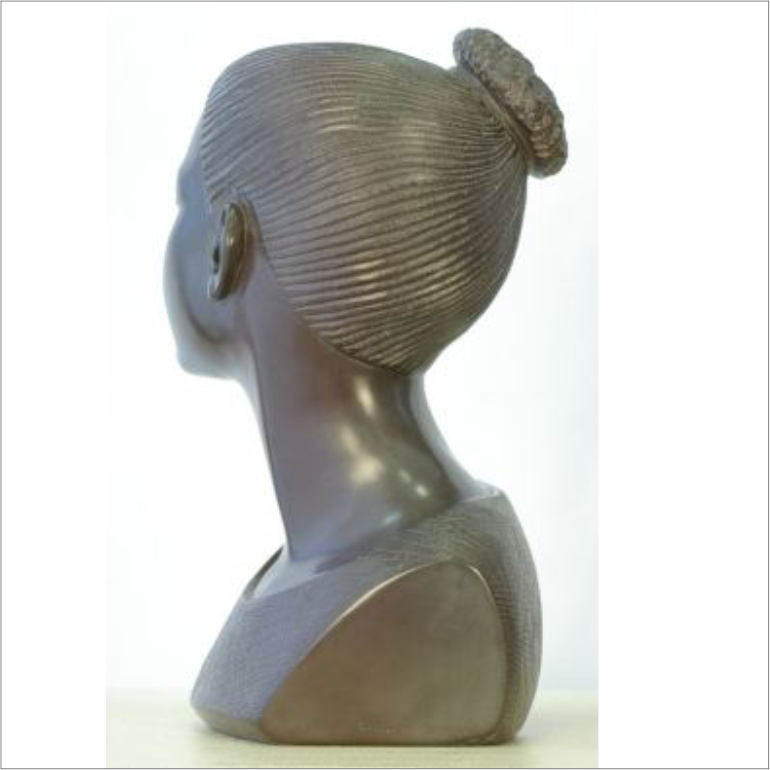
THE GUARDIAN
(muchengeti)
1988
Dimensions: 60 x 28 x 41 cm | 75 KG
In the African Culture certain prominent and highly respected men are selected to be Guardians of their people. In this role, their task is to protect the people of their community and defend them against outside attacks. They must have great integrity and be highly respected.
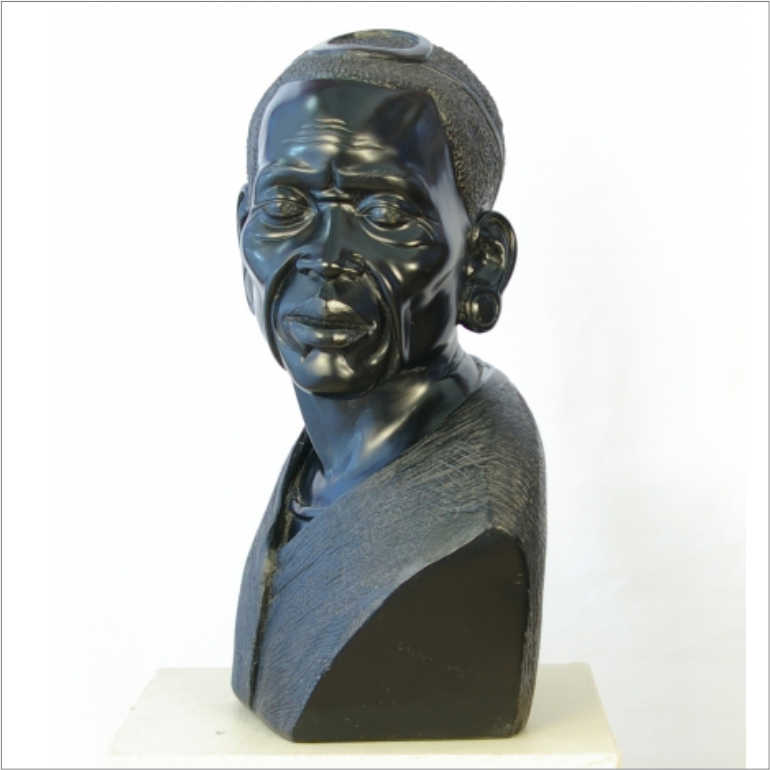
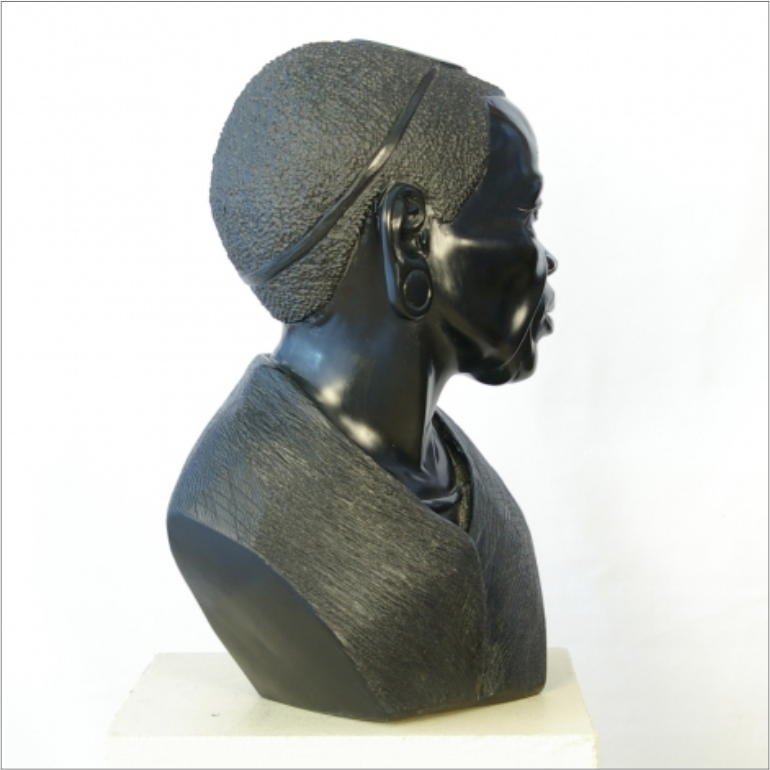
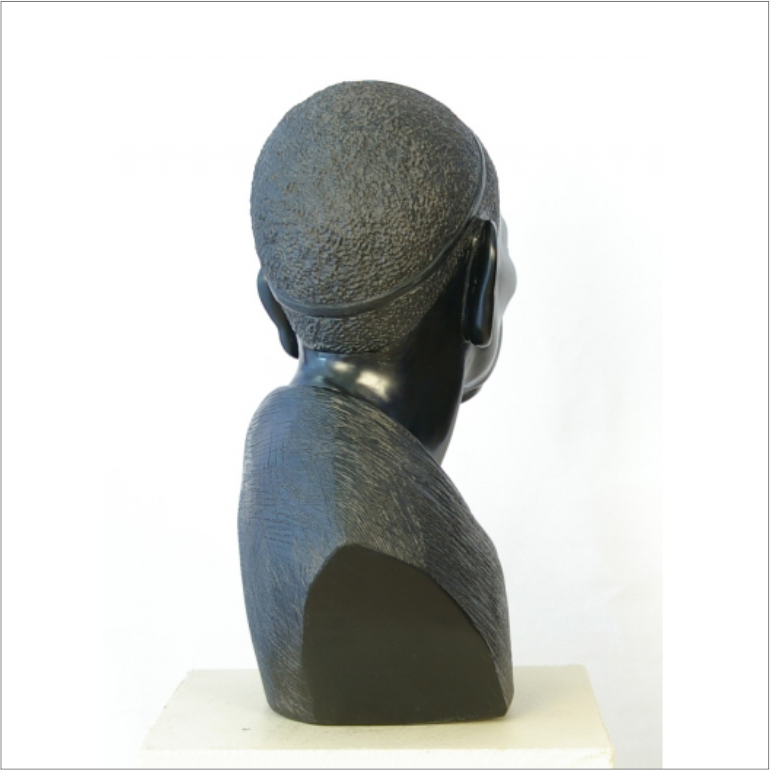
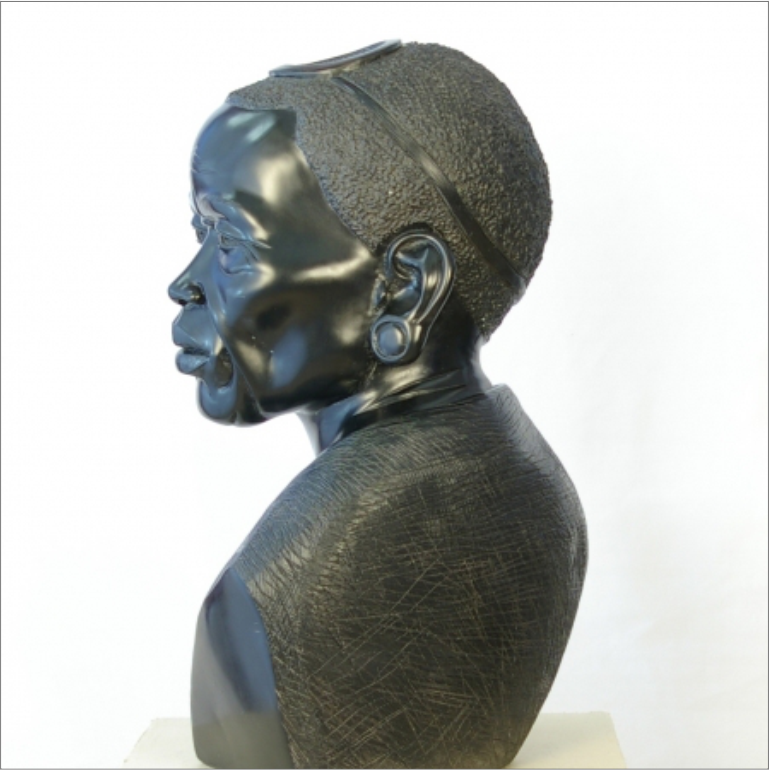
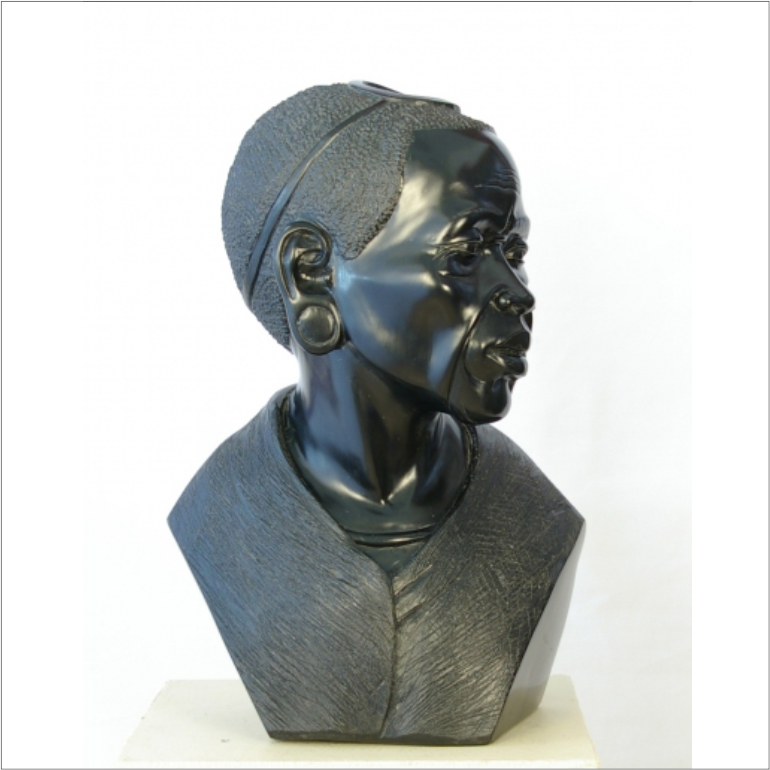
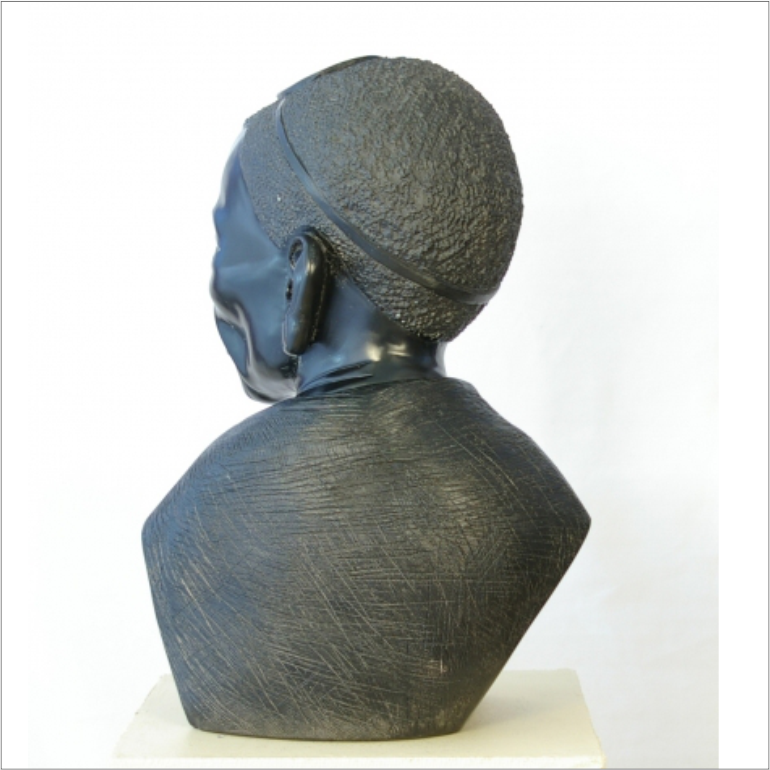
RESPECTED ELDER
(nhume youchenjeri)
1987
Dimensions: 49 x 28 x 28 cm | 44 kg
Democracy rules in the African tribe. A man is elected by the tribe to be the leader in the tribe; this can be a long process because much debate amongst the people take place until the tribe select their leader, the Respected Elder, who will make decisions with the people for the people.


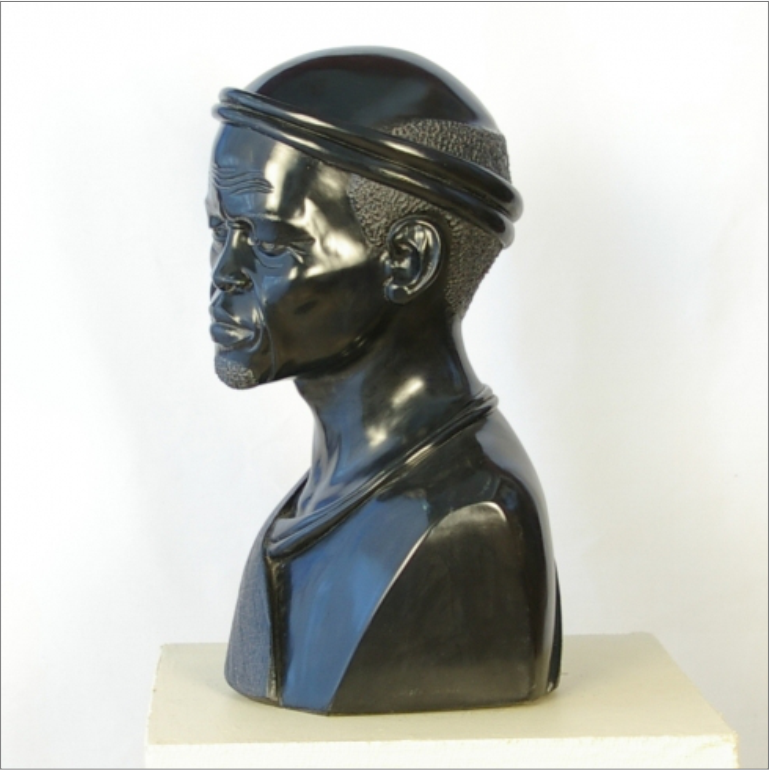
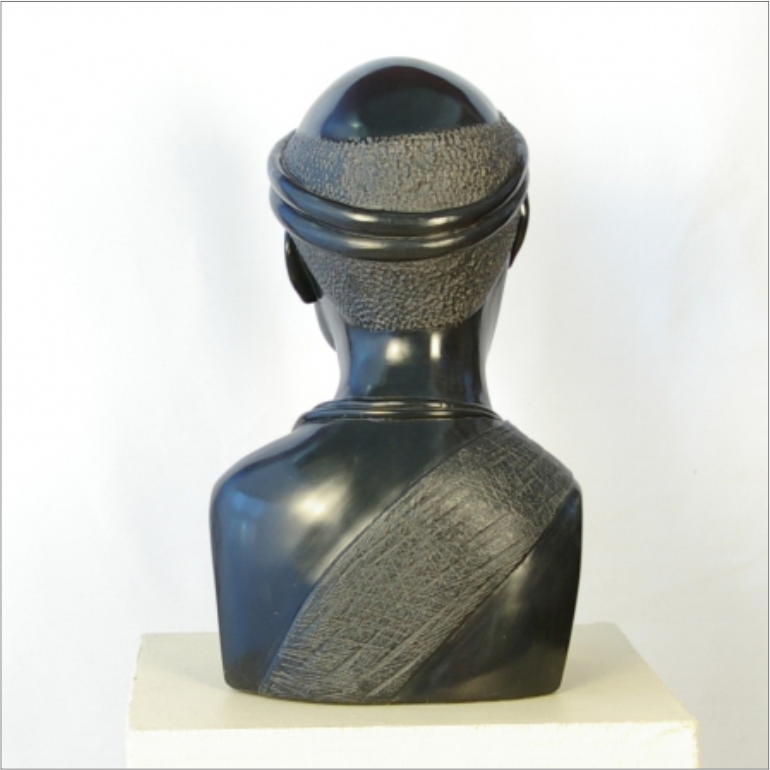
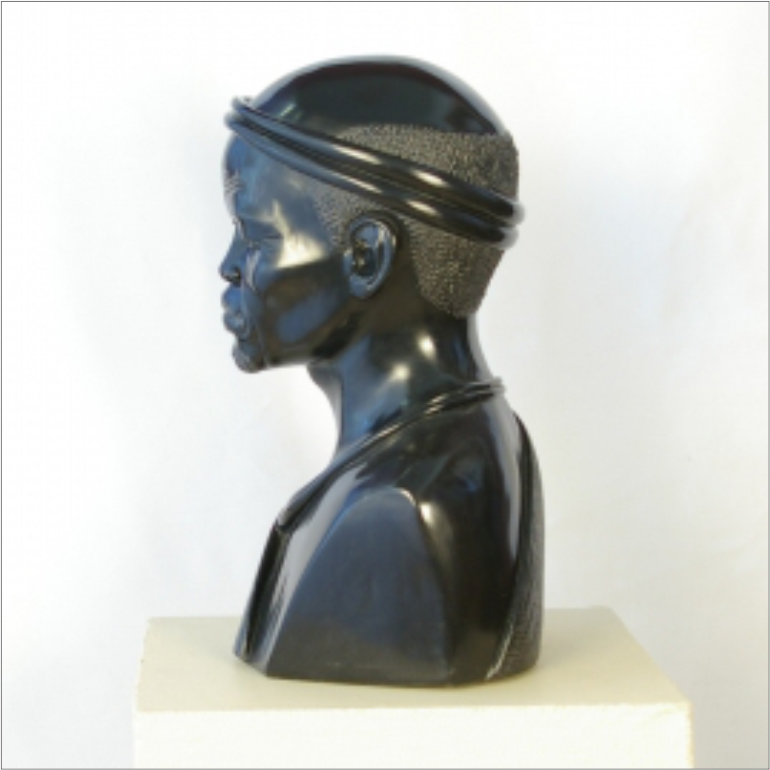

TRANSITION
(Shanduko)
1987
Dimensions: 41 x 24 x 31 cm | 28 kg
When a young male reaches the age of 14 or 15, he prepares to change from being a young boy to becoming a man. This is the Transition, where he goes to join a gathering of other boys, and they learn the rules of manhood and also go through the ceremony of circumcision to become recognised as a man.

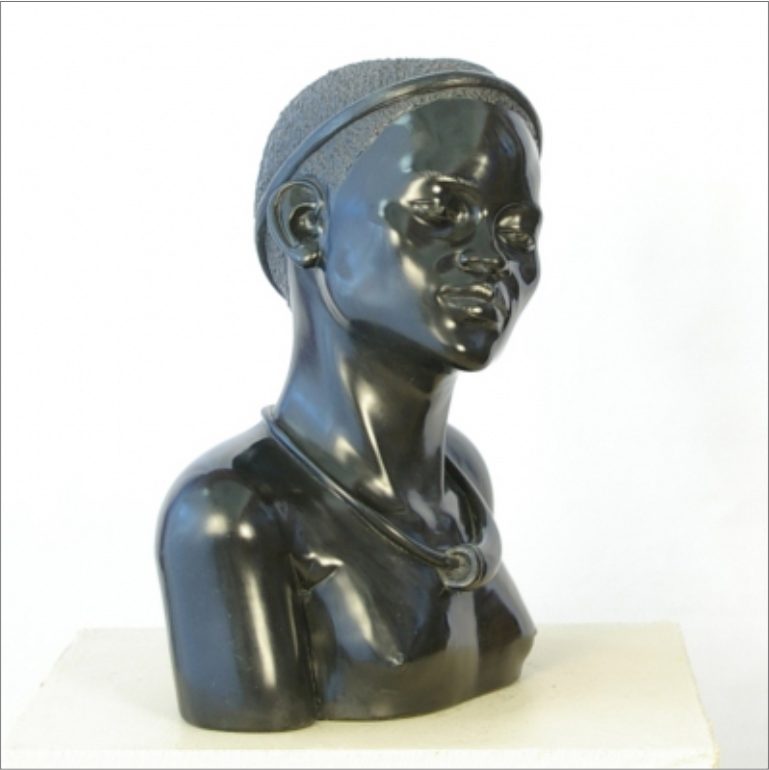




QUEEN ELIZABTHE II
BUCKINGHAM PALACE
THE AMBASSADORS’ ENTRANCE
and the art of
CASPER DARARE
Mother and Child carved by Casper Darare from AfricaStone, a unique deposit of metamorphosed clay
A black stone bust of a young African mother carrying a baby on her back in a pouch. The woman facing to her left wearing a tightly bound cloth-hat, on a roughly carved stone base with polished top and front. The bust swivels to allow display from different angles.
The Shona people of Zimbabwe are known for their sculptures marked by abstract features and stylised forms. Casper Darare is renowned and recognised as a “classical” African sculptor.
Dimensions: 60.5 x 43.0 x 32.0 cm (whole object)
PROVENANCE
Casper Darare’s carving was presented to Queen Elizabeth II by the President of Zimbabwe, Robert Mugabe, on her state visit to the Republic of Zimbabwe, 10-19 October 1991. The late Casper Darare was a South African artist of Shona descent. During his lifetime Casper developed a superb talent as a carver of stone.
CASPER DARARE (1952 – 2001)
His artworks are world renowned, admired and are sought by collectors worldwide. Since the 1970’s his sculptures have been exhibited in major galleries in South Africa, (he had collected an award as South Africa’s best Sculptor) the Louvre in France, the United States, Holland, Germany, the United Kingdom and Singapore.
Working originally in Verdite, Casper became the first sculptor to use Africa Stone which is known as the marble of Africa. This stone is a unique deposit of metamorphosed clay.
‘Sculptor Casper Darare’s strength lay in his amazing ability to create human figures with great expression, sensitivity, and mood.’ Casper created beautiful, finished carvings that reflected the pride of Africa in traditional form. Casper passed away in 2001 after a short illness.
THIS CARVING IS THE PROPERTY OF THE ROYAL COLLECTION TRUST AND IS NOT FOR SALE
BUT FOUR CERTIFIED ORIGINAL CASPER DARARE ARTWORKS ARE AVAILABLE
All these carvings are issued with Provenance declaration, and certificates of authenticity. They were purchased personally by Paul Gunner from Casper Darare in 1987-9 and have been in his possession ever since.
VIEW ROYAL COLLECTION TRUST

